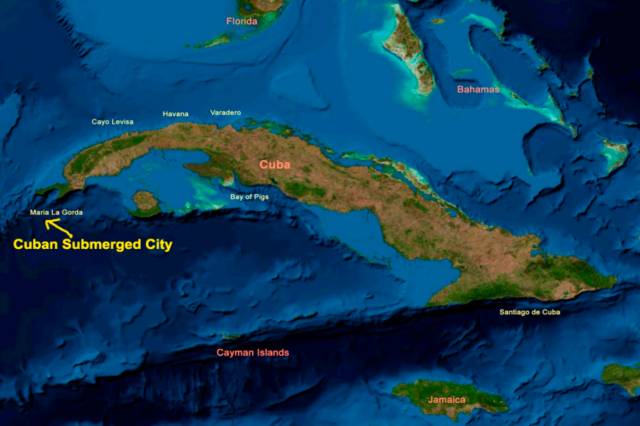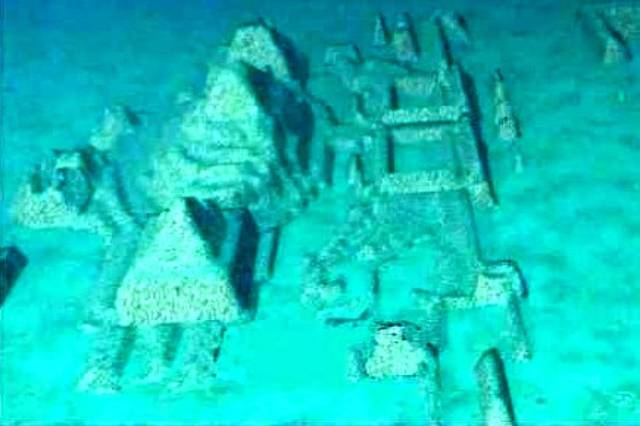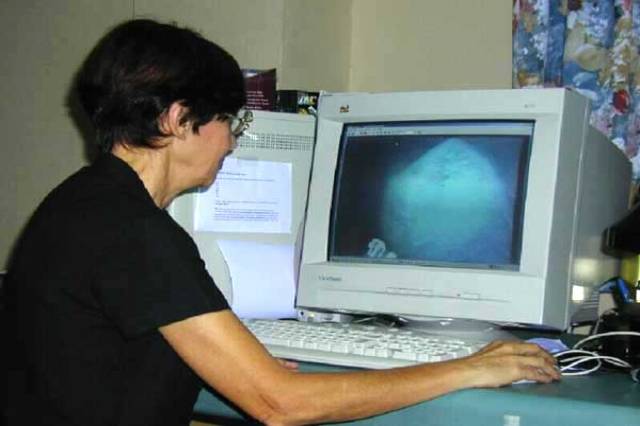In 2001, working on a survey mission with the Cuban government, a Canadian exploration company discovered what appeared to be man-made structures of a sunken city deep within the Atlantic ocean. Read on to find out what happened to this news.
The Mysterious Sunken City in Cuba
In 2001, Pauline Zalitzki and husband Paul Weinzweig, owners of a Canadian company called Advanced Digital Communications (ADC), were working on a survey mission with the Cuban government. ADC was one of the four firms working in a joint venture with Pres. Fidel Castro’s government to explore Cuban waters, which hold hundreds of treasure-laden ships from the Spanish colonial era. They previously had success in locating the remains of the USS Maine, which sank under mysterious circumstances in Havana Harbour in 1898, during the Spanish-American war. It was hoped that they could locate further sunken ships.
The exploration was conducted along the coast of the Guanahacabibes Peninsula in the Pinar del Río province of Cuba. Advanced Sonar equipment was being used by the team to survey the seas when they picked up strange stone structures lying some 600 to 750 meters beneath the sea. The structures seemed to be symmetrically organized stones reminiscent of typical ancient cities with large pyramidal structures.
Scroll down for the video

The media soon caught wind of the discovery and began sporting headlines such as “‘Lost city’ found beneath Cuban waters” and “Submerged Cuban ruins may be manmade, experts say.” However, the finding also attracted the attention of the government, national museum, and National Geographic, who promised to investigate the sonar images further. Unfortunately, almost twenty years have gone by and the story has never resurfaced. What ever happened to the sunken city in Cuba? Was it ever fully investigated? And why has the media fallen silent on this unusual discovery?
Too Deep
Findings suggest that such magnificent stonework would have taken 50,000 years or more to sink to such depths of the sea. “It was beyond the capability of cultures of that time to establish such complex structures,” said geologist and paleontologist Manuel Iturralde. “To explain these samples in a geological point of view is very hard.”
In Underworld: The Mysterious Origins of Civilization, author Graham Hancock examines the numerous structures that have been discovered underwater around the world. Most of the sites that Hancock discusses lie less than 120 meters (395 feet) below sea level, which comes as no surprise since the sea level never fell below this mark during the time Homo sapiens walked the earth.
During the Pleistocene, which was characterized by a series of ice ages, sea levels dropped significantly, but the maximum drop was around 100 meters. “At no point during the Ice Age would it have been above sea level unless, of course, the land on which they stand has sunk. This is the claim made for Atlantis: according to Plato’s account, it was destroyed ‘by violent earthquakes and floods.’ However, if we take Plato at his word—as we must if we assume Atlantis to have been an historical place—the violence of its sinking makes it improbable that an entire city could have survived plunging more than 600 meters into an abyss,” writes Keith Fitzpatrick-Matthews of the debunking website Bad Archaeology.

Grenville Draper of Florida International University also considers it highly unlikely that such an event could have occurred: “Nothing of this magnitude has been reported, even from the Mediterranean.”
Natural Phenomenon?
Martin Dean, director of the University of St Andrews’s archaeological diving unit, said, “The world’s seas and oceans are full of underwater limestone, basalt and other natural geological formations, some of them covering many square miles, which are mistakenly interpreted as sunken cities with monotonous regularity.”
Over recent years there have been a number of “sunken city” claims, but they have all turned out to be submerged limestone or other geological formations. Manuel Iturralde does not discount the possibility that the rock formations are merely the result of the wonders of Mother Nature. “Nature is able to create some really unimaginable structures,” he said.
What Happened Since?
In order to get better data, Paulina Zelitsky began raising funds for another expedition to the site. It was announced in October 2004 in a story that seems not to have been picked up by the world’s media (but New Age websites noted it) that “they could not complete the mission due to technical deficiencies of the submarine that rendered it unable to take images from the marine bottom.” Nevertheless, Zelitsky announced that they would be returning in 2005, with funding from National Geographic Society. However, since then, there have been no updates.

Experts were simply not convinced that Paulina Zelitsky had really discovered a sunken city. She currently still works as an oceanographic engineer based in Ontario (Canada) and has not announced any plans since 2004 to return to the site. Although some may see this as evidence that she has been warned off it, it is more likely that she has been unable to persuade anyone to raise funds for an expedition in search of something that might not actually exist.
Until now, the question whether this ancient advanced civilization older than the Great Pyramids of Giza existed is still up in the air.
